What's New
Displaying results 351 - 360 of 4052
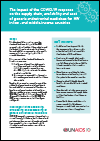
Resource | Publications,
The objective of this report is to assess the situational landscape during mid-May 2020 surrounding the value chain of the production and distribution of generic antiretroviral medicines in low- and-middle-income countries and to provide recommendations on mitigating the risks of potential disruptions.
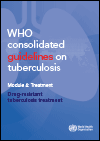
Resource | Guidelines,
The present WHO Consolidated Guidelines on Tuberculosis, Module 4: Treatment - Drug-Resistant Tuberculosis Treatment includes a comprehensive set of WHO recommendations for the treatment and care of DR-TB. The document includes two new recommendations, one on the composition of shorter regimens and one on the use of the BPaL regimen (i.e. bedaquiline, pretomanid and linezolid). In addition, the consolidated guidelines include existing recommendations on treatment regimens for isoniazid-resistant TB and MDR/RR-TB, including longer regimens, culture monitoring of patients on treatment, the timing of antiretroviral therapy (ART) in MDR/RR-TB patients infected with the human immunodeficiency virus (HIV), the use of surgery for patients receiving MDR-TB treatment, and optimal models of patient support and care. The guidelines are to be used primarily in national TB programmes, or their equivalents in Ministries of Health, and for other policy-makers and technical organizations working on TB and infectious diseases in public and private sectors and in the community.
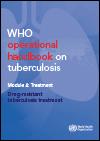
Resource | Guidelines,
The operational handbook provides practical information and tools that complement the recommendations in the guidelines. The strategies described in the operational handbook are based on the latest WHO recommendations which were formulated by Guideline Development Groups using the GRADE approach. In many cases however, the recommendations in their current form lacked sufficient clinical and programmatic detail, which is important for implementation. This operational handbook complements the guidelines with practical advice based on best practices and knowledge from the fields such as pharmacokinetics, pharmacodynamics, microbiology, pharmacovigilance and clinical and programmatic management.
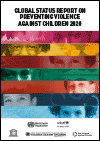
Resource | Publications,
The Global status report on preventing violence against children 2020 charts countries’ progress towards the SDGs aimed at ending violence against children. Jointly published by WHO, UNICEF, UNESCO, the UN Secretary-General’s Special Representative on Violence against Children, and the Global Partnership to End Violence against Children, it collates inputs from over 1000 decision-makers in 155 countries who assessed their violence prevention status against the evidence-based approaches set out in INSPIRE: Seven strategies for ending violence against children. The report shows that while many of the participating countries are taking some action, government officials from these same countries acknowledge that their efforts are clearly insufficient to achieve the SDG targets. The report concludes with recommendations for boosting INSPIRE implementation efforts and accelerating national progress.
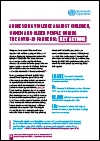
Resource | Publications,
Several countries affected by COVID-19, have seen increases in levels of violence occurring in the home, including violence against children, intimate partner violence and violence against older people. Countries also face increasing challenges in maintaining support and care for survivors of violence. This brief compiles key actions that the health sector can undertake within a multisectoral response to prevent or mitigate interpersonal violence based on existing WHO guidance.
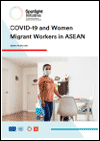
Resource | Publications,
This brief explores the multi-dimensional impact on women migrant workers, highlighting that COVID-19 is not only a health crisis but also a crisis with detrimental effects on freedom from violence and harassment, employment, income, social protection, access to services, and access to justice.
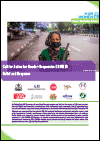
Resource | Publications,
The civil society organizations participating in the Gender Monitoring Network facilitated by UN Women Bangladesh, are concerned by how the COVID 19 pandemic is disproportionally affecting women and girls. Inspired by feminist and human rights principles, the Gender Monitoring Network calls on Policy Makers to recognize women human rights and integrate an intersectional gender equality approach in the COVID 19 Response to ensure everyone has access to necessary information and supports and resources. The Call for Action represents the voices of women and other vulnerable groups who are most affected by the pandemic.

Resource | Publications,
The Philippines is among the worst affected countries in the South East Asian region in relation to the COVID-19 pandemic – it has experienced the highest number of new confirmed cases per day, second highest number of deaths, and third highest rate of infection. This second Gender Snapshot from UN Women Philippines highlights the situation of women and girls during the COVID-19 pandemic in the period of April to June 2020.
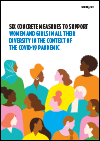
Resource | Publications,
COVID-19 is not only a health issue, just as HIV never was. It impacts on a wide range of human rights, and although it affects all people, it does so unequally. Women and girls in all their diversity are experiencing the greatest impact of the crisis. COVID-19 has highlighted the stark inequalities across societies, with a lack of pandemic preparedness and fragile or non-functioning institutions posing graver impacts.
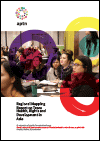
Resource | Publications,
This Mapping Report highlights recent steps taken at a regional level to improve trans people’s access to comprehensive health care, including gender-affirming health services. It also outlines the purpose of the From Bridges to Barriers conference and how this report would be used in health and policy discussions.





